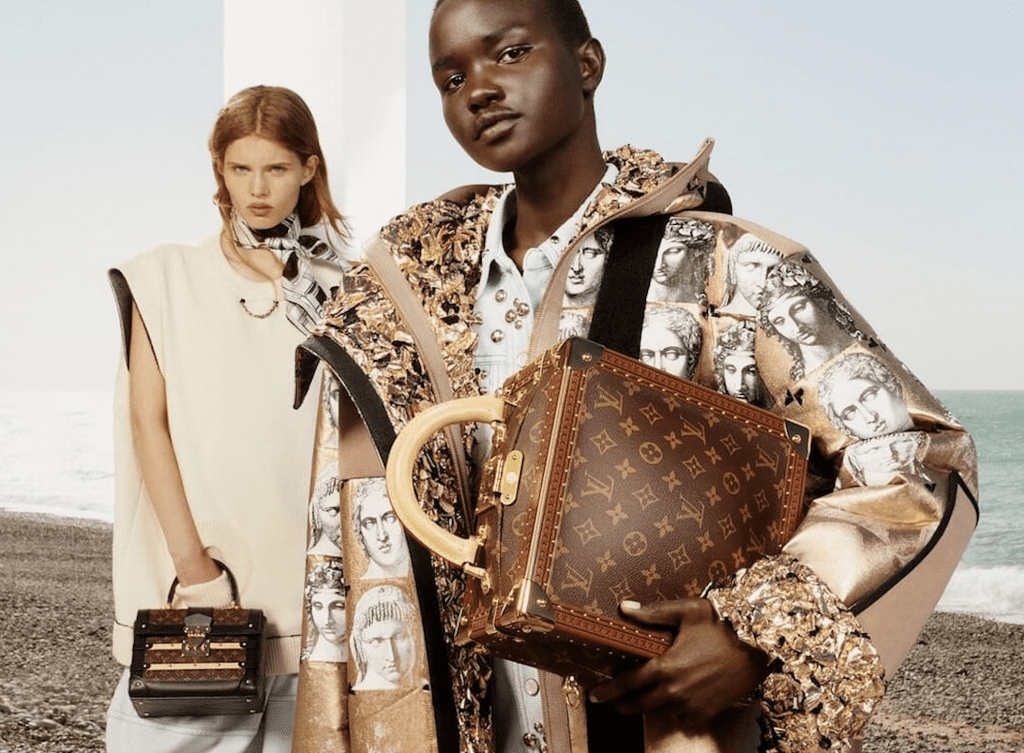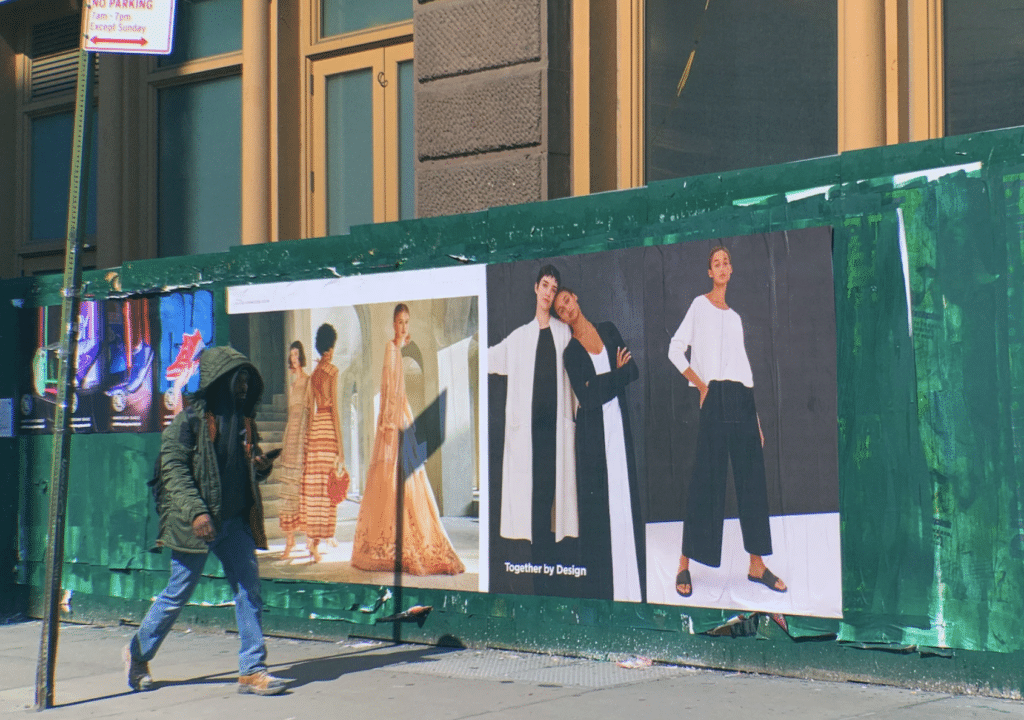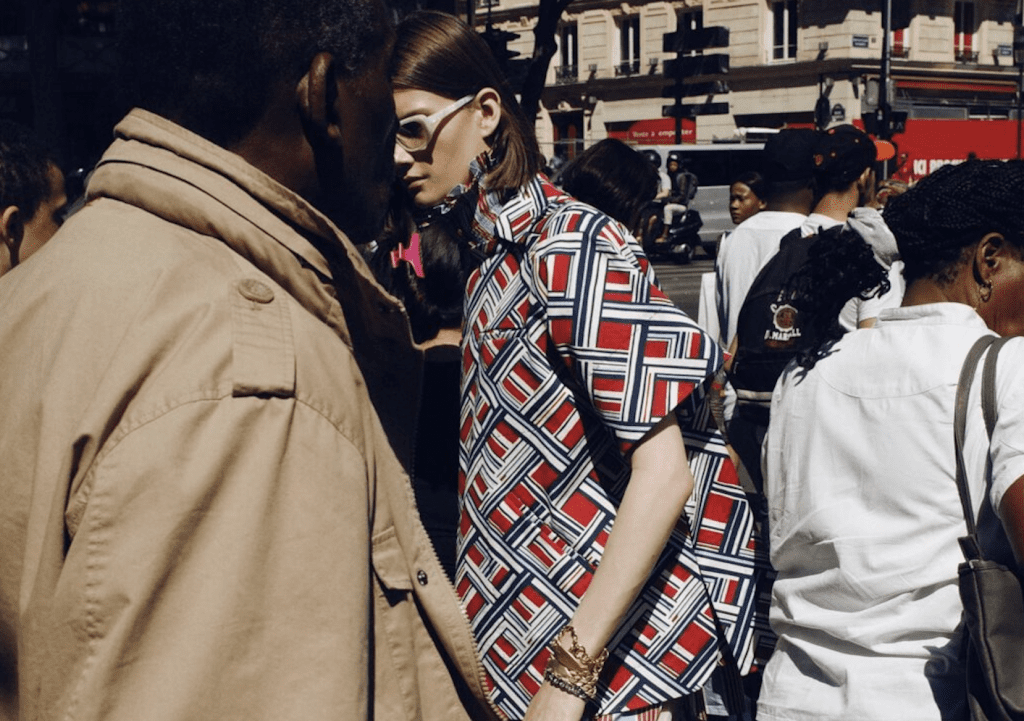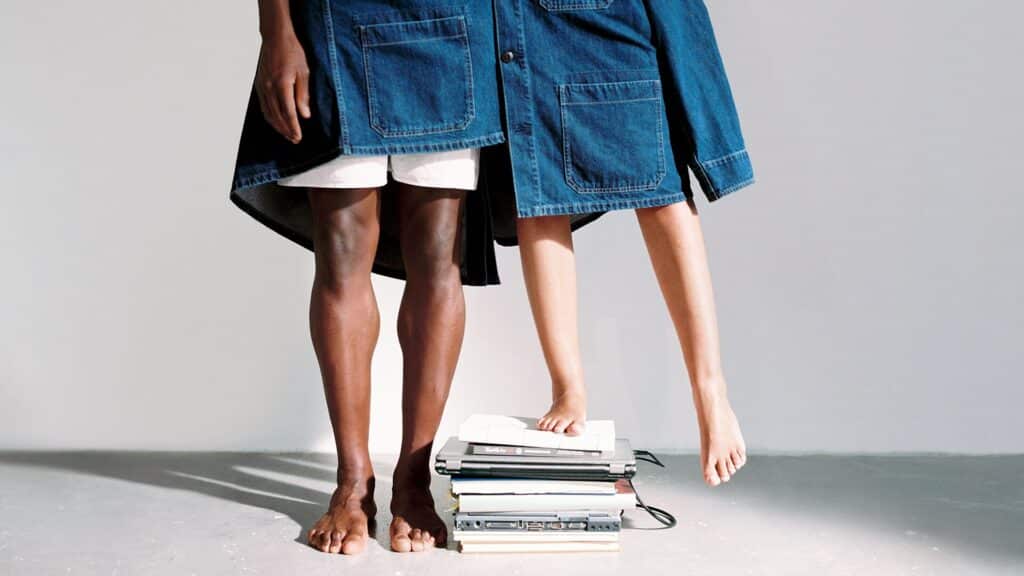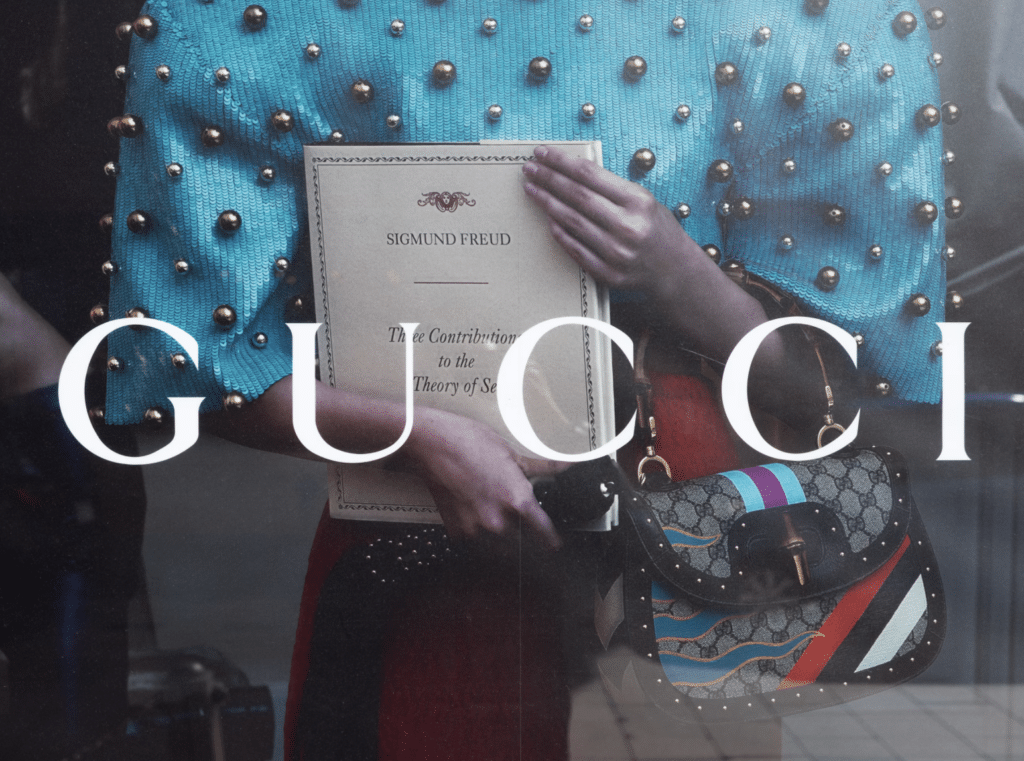Despite falling sales during the fiscal year ending December 31, 2020 as a result of the striking impact of the COVID-19 pandemic, Deloitte found that the luxury goods market as a whole “proved resilient,” as indicated by the fact that the world’s Top 100 luxury goods companies generated luxury goods revenues of $252 billion, down by just over 10 percent from the $281 billion generated during the previous fiscal year. Revenues generated by the Top 10 luxury brands on Deloitte’s Global Powers of Luxury Goods 2021 list, alone, topped $129.7 billion for 2020, accounting for a whopping 51.4 percent of the total sales by all of the Top 100 brands.
Even with the overarching drop in sales, more than half of the Top 100 were profitable, per Deloitte, with 13 companies still reporting double-digit net profit margins. The report points to Hermès, which it says achieved “industry-leading net profit margins,” and the highest net profit margin of all companies in the Top 100 in FY2020, at 21.7 percent. According to Deloitte, Hermès has consistently been one of the most profitable companies in the Top 100, delivering net profit margins of more than 20 percent in each of the past five years FY 2016-2020.
The report also makes a nod to LVMH’s profitability, stating that during the disruption from COVID-19, “efforts to control costs and adapt to new requirements enabled Louis Vuitton to maintain its exceptional level of profitability, while continuing its investment policy; and Christian Dior Couture increased its profitability.” And also cites Moncler, which achieved a net profit margin of more than 20 percent for the past four years, the second highest net profit margin in the Top 100 in FY2020.
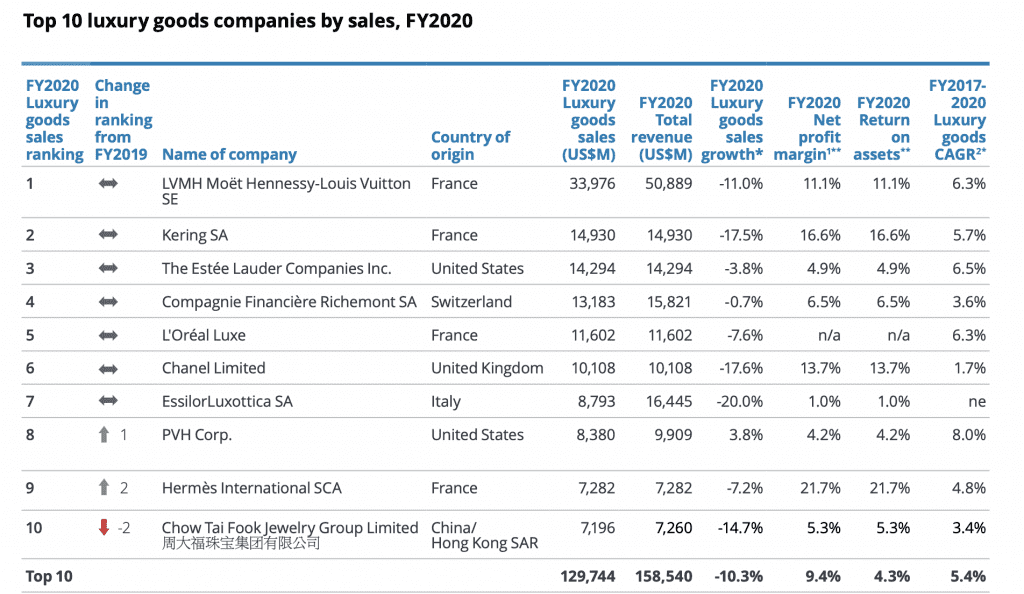
As for the Top 10 for the year, there was relatively little change in terms of positioning, with LVMH, Kering, Estée Lauder Companies, Richemont, L’Oréal Luxe, Chanel Limited, and EssilorLuxottica SA again taking the top spots seven respectively. Calvin Klein and Tommy Hilfiger owner PVH Corp. jumped up a spot to number eight driven by growth in its Tommy Hilfiger brand., Hermès entered the Top 10 for the first time, and Chow Tai Fook Jewelry Group Limited fell to the number ten spot. Rolex is inching towards the top 10, rising one spot to number 11 this year, followed by Ralph Lauren (12), Swatch (13), Versace-owner Capri Holdings (14), and Lao Feng Xiang Co., Ltd. (15).)
Turning to the fastest-growing companies on the list (based on FY2017-2020 CAGR), e-commerce platform Farfetch topped that list, which the triple-digit sales growth in its owned and licensed luxury brands coming “mainly from its acquisition of streetwear luxury company New Guards Group in August 2019.” It was followed by watchmaker Richard Mille, outwear company Canada Goose, (unrelated but similarly-named) Italian sneaker company Golden Goose, and Stone Island’s corporate entity Sportswear Company SpA, which round out the rest of the top 5.
And not to be overlooked, luxury outerwear maker Moncler retained its position as “the most consistent luxury goods star performer.” Remo Ruffini-led Moncler has “not only appeared in the ‘Fastest 20’ [list] for the past six years,” according to Deloitte, but it has also achieved a net profit margin of more than 20 percent for the past four years. Things are only expected to look up further for the company in 2021, as its growth will be boosted in 2021 by its acquisition of another “Fastest 20” company: Sportswear Company.
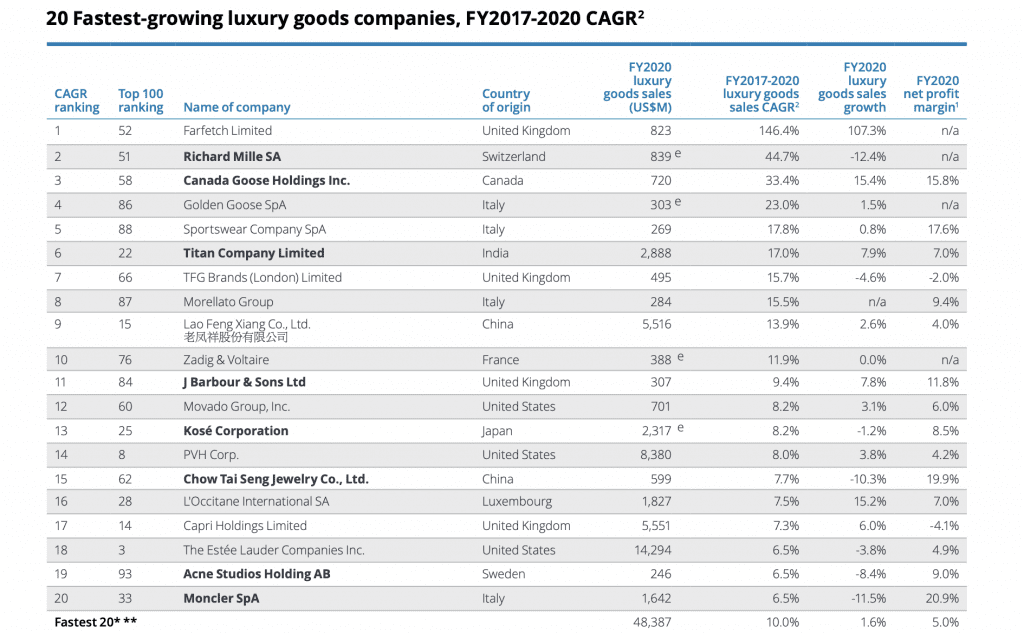
Deloitte states that Canada Goose is also a “star performer,” as the only other company in the Top 100 to achieve double-digit sales growth and double-digit net profit margin in each of the past three years.
The Year in Luxury Trends
In terms of broad takeaways, Deloitte highlighted to three industry developments for the year, the first of which was “digitalization and sustainability goals in the luxury goods industry,” which it says are driving fashion-tech investments. “What were previously choices of product design of just a few environmentally-conscious and courageous innovators are now moving closer to the mainstream, involving almost all the companies in the industry,” the report states, noting that “increasingly, luxury goods companies are changing their approach and mindset, incorporating sustainability and digitalization into their long-term strategies, to align with consumers’ demands and new regulatory requirements. They are focusing more on sustainability in the design and production of luxury goods, and at the same time are accelerating the adoption of digital solutions to engage with consumers and deliver luxury shopping experiences using technology.”
Second Deloitte pointed to the embrace of the circular economy, stating that “given the changes in the luxury industry over recent years, it’s clear that sustainable luxury – promoting environment and social responsibility—is here to stay. Increasing numbers of luxury products are labeled ‘sustainable’, and the industry is now accustomed to concepts like ethical fashion (production methods, working conditions, and fair trade); circular fashion (recycling, upcycling, and thrifting); slow fashion (sharing, renting); and conscious fashion (eco-friendly and green fashion).”
While luxury goods companies are “setting environmental targets for the future, with offsetting carbon emissions as a priority,” Deloitte asserts that “an imperative is to find new ways to be more sustainable, in design, production, distribution, and communication.”
And finally, the consultancy aptly states that NFTs and fashion gaming are a “new luxury frontier,” and that luxury goods companies are becoming involved in the market for non-fungible tokens, and potentially, more interestingly, gaming. “In general, the relevance of fashion and luxury to gaming is that virtual outfits are a vital part of the gaming culture – a way to ‘dress up’ avatars in the virtual world. The link is so tight that in March 2021, the sale of 600 non-fungible token sneakers in a seven-minute auction, generated $3 million in revenue,” the report states. “In the digital world, luxury has the same aspirational relevance that it has in real life: it is an asset to differentiate oneself and express one’s way of being and values.”
Deloitte further contends that “entering the gaming world is a way for luxury houses to speak to the younger generations, who will be their most important customers in the coming decades and creating appeal by modernizing their brands. Gaming could also be considered a new touchpoint for luxury brands outside the store, and a new context for getting in touch with a target audience and creating engagement with the brand. Collaborations between luxury goods firms and gaming companies offer the opportunity to create parallel streams of revenues thanks to capsule collections that can be found first in a game and are then sold in real life.”
Companies are included among Deloitte’s Top 100 according to their consolidated sales of luxury goods in FY2020, which it defines as financial years ending within the 12 months from 1 January to 31 December 2020. In order to be included on the list, Deloitte says that a company must first be designated as a luxury goods company, which it defines those offerings up products for personal use, and that is “the aggregation of designer clothing and footwear (ready-to-wear), luxury bags and accessories (including eyewear), luxury jewelry and watches and prestige cosmetics and fragrances.” The companies can range, per Deloitte, from traditional ultra-luxury, through super premium and aspirational luxury, down to affordable/accessible luxury.







